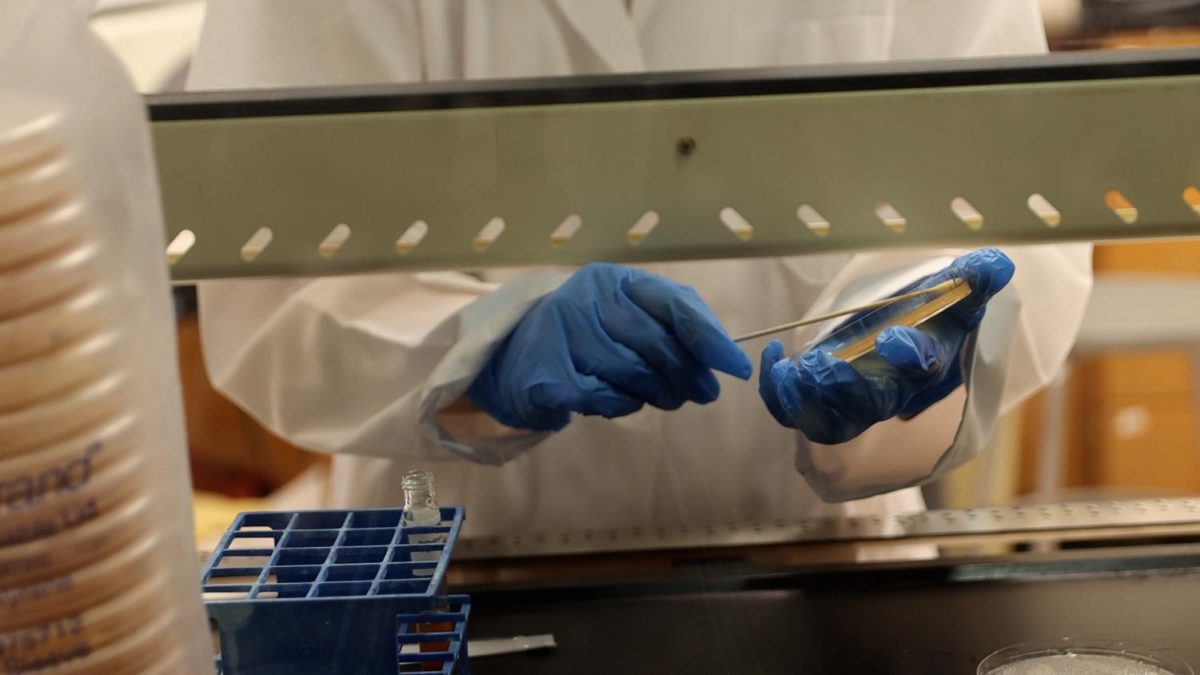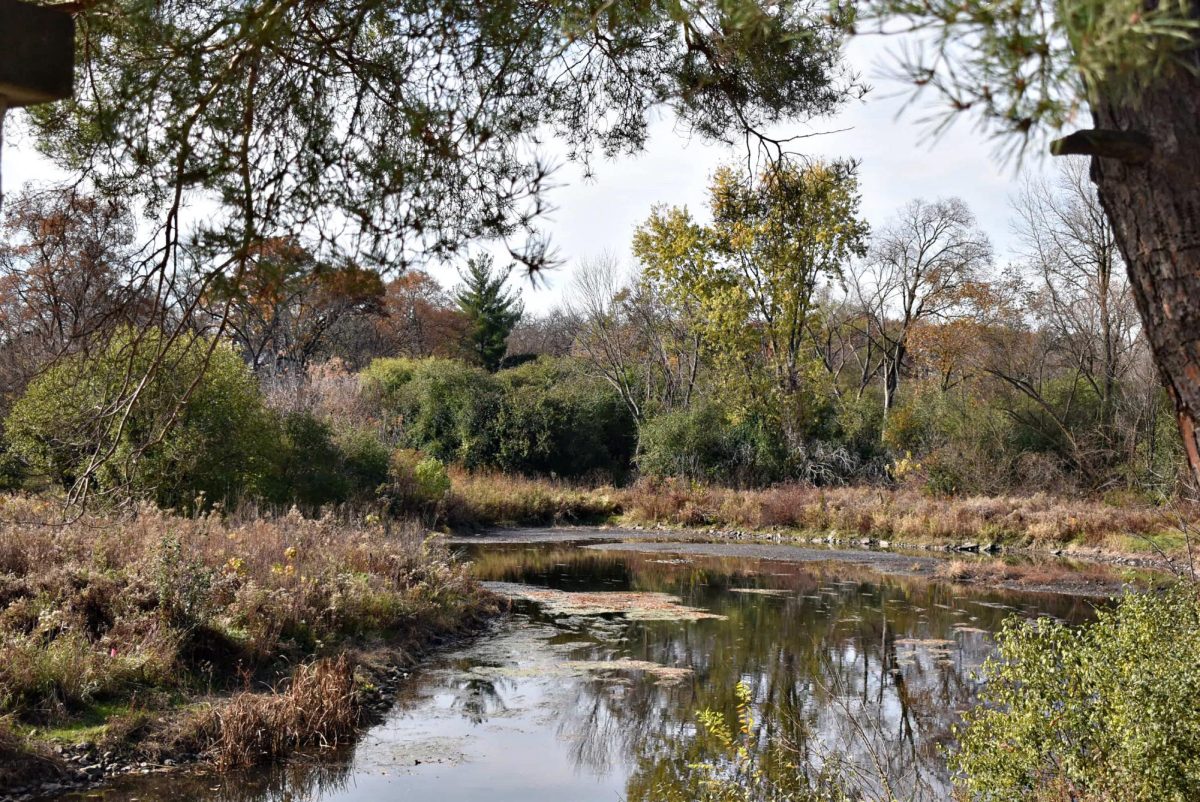There exists a special kind of water that cannot be found in grocery stores, malls, or water fountains anywhere in America – one with a taste that cannot be quickly forgotten. That is right: microorganism-filled, mucky pond water. Delicious.
WEGO’s environmental science classes visited Blackwell Forest Preserve on Nov. 7 to learn about how mussels and other microorganisms impact their local environment. The students were able to participate in water testing activities throughout the course of the full-day field trip.
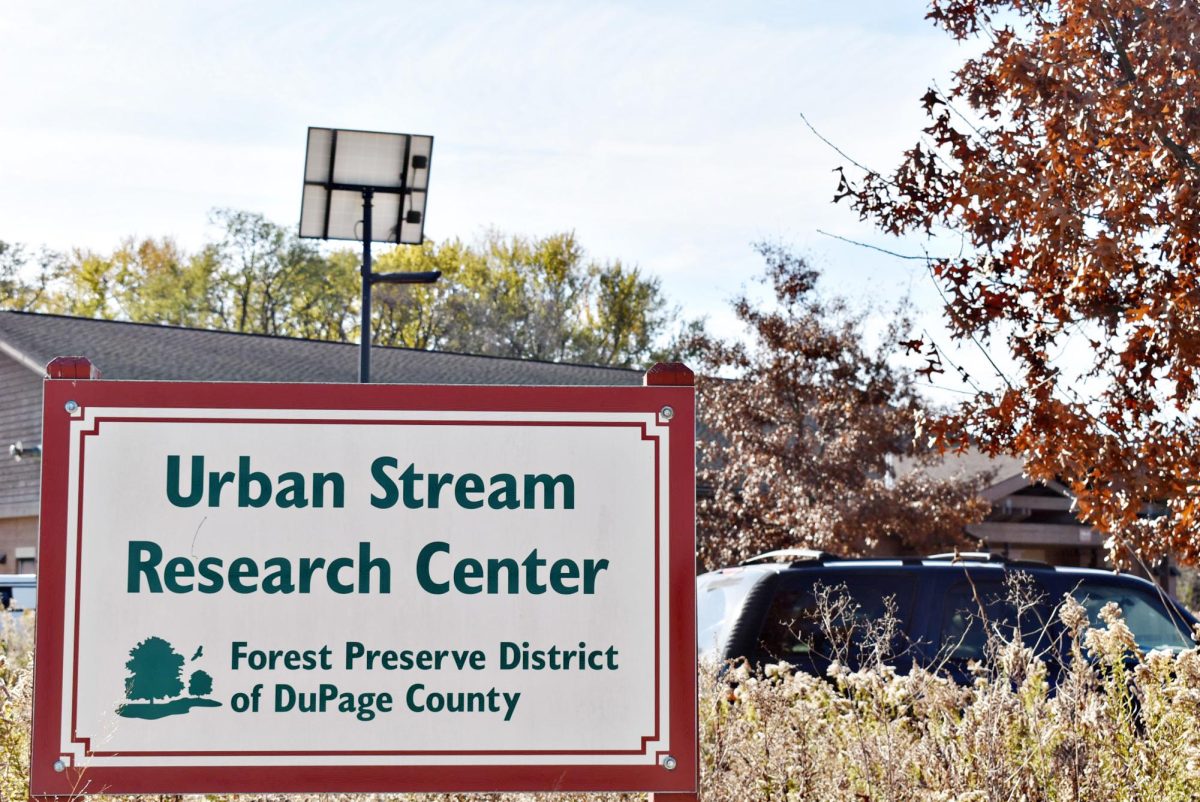
After stepping off the bus, students are greeted by this entry sign to the facility. The aquaculture facility is just over a decade old, and includes a complete workshop for research. Its mission is to “keep common mussel species common in an urban stream system.”

The laboratory invites students in with an overview of the microorganisms currently being studied by scientists on site. The five displayed are types of mussels, ranging from the creeper to the plain pocketbook, all which help stabilize their ecosystem.
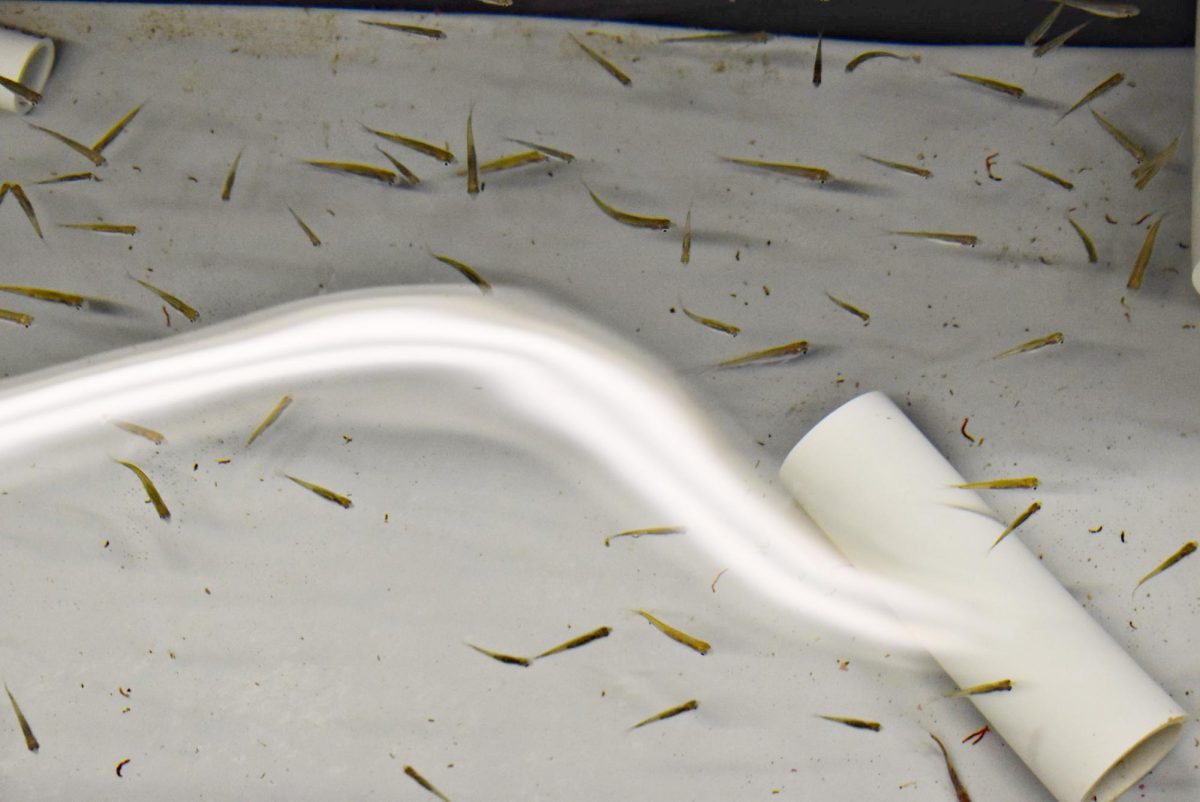
The crystal clear water allows researchers the chance to fully observe the animals under bright lights of the facility, which has been specially outfitted for analysis.
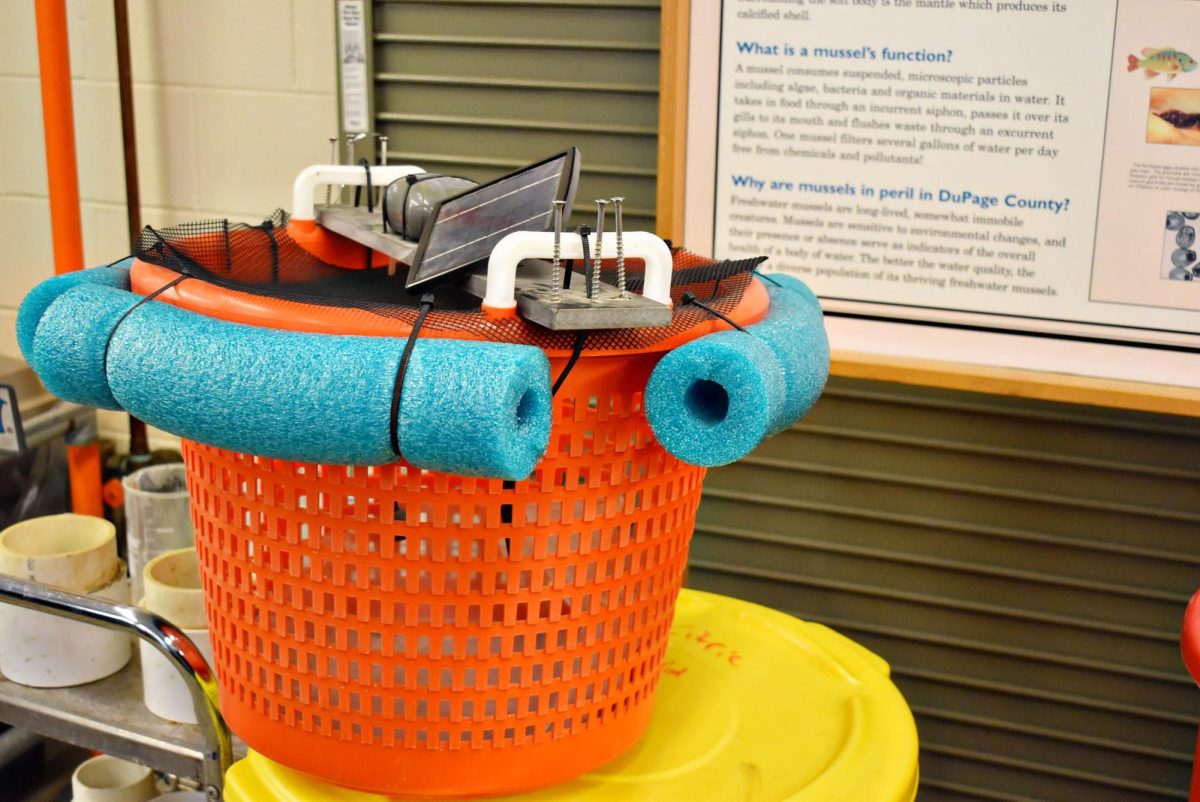
This modified basket allows the team to gather readings of several contaminants’ presence in the water. Behind the contraption is an illustration outlining the importance of the mussel, and why water quality impacts their habitat so considerably.
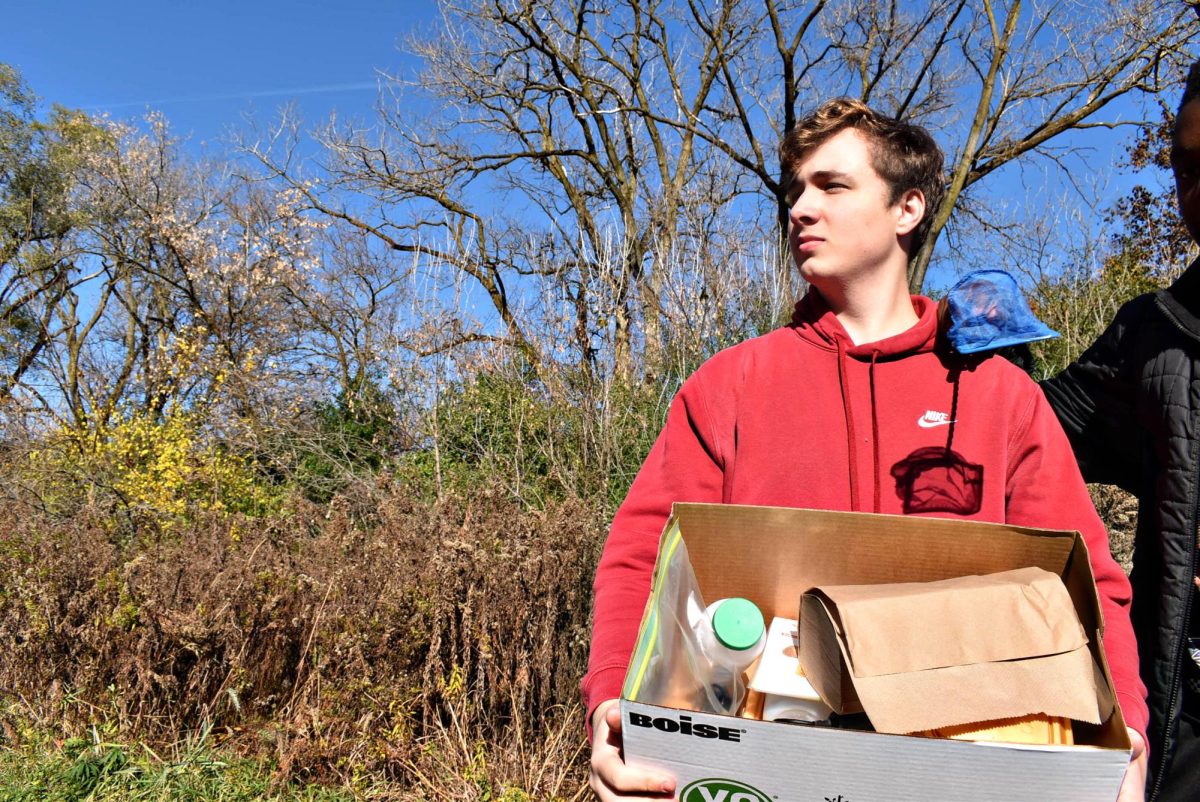
The students are separated into groups to test the quality of water from ponds within the forest preserve. Senior Ryan Blackburn carries the supplies for his group.
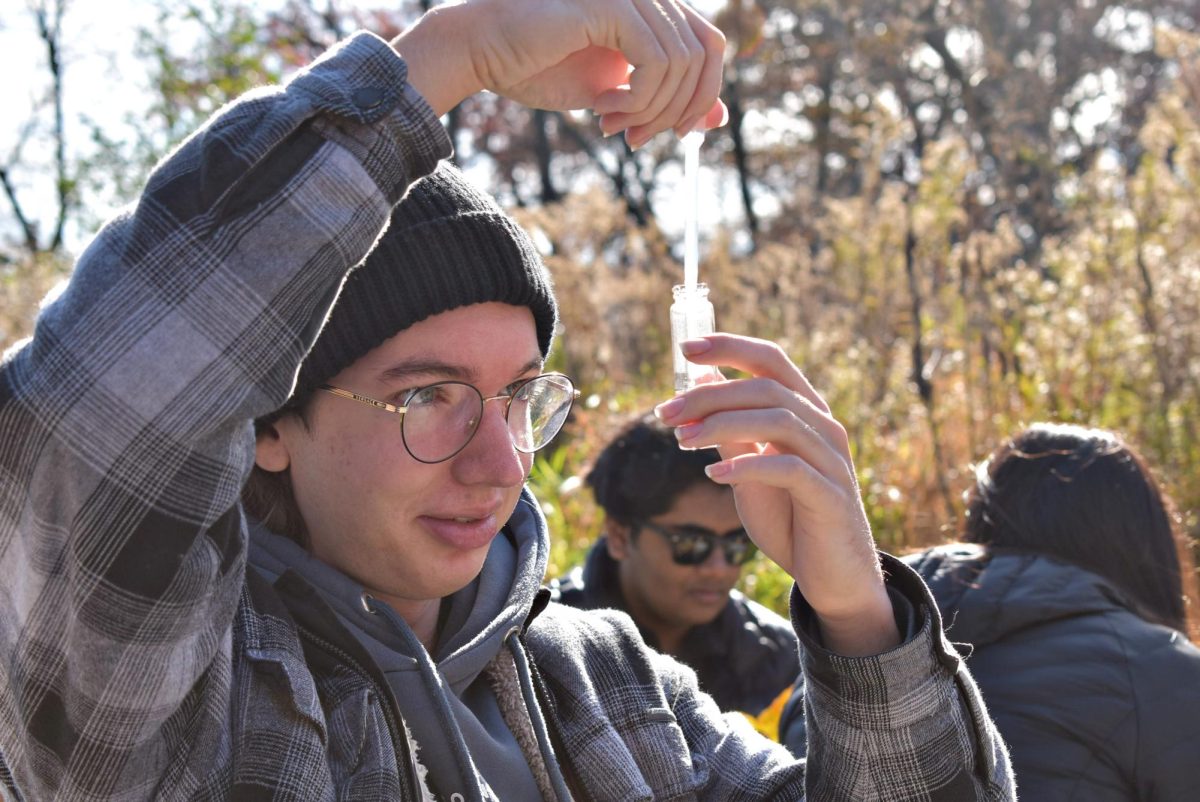
Senior Owen Thompson grabs a sample of water to be tested.
“We test the water for a few things – its pH level, temperature, its oxygen level, nitrate & phosphate content, the amount of oxygen dissolved in the water, and fecal coliform bacteria. Each process was a little bit different, but each process involved measuring out stream water into test tubes or containers, and using each tool respectively to get our readings,” Thompson said.
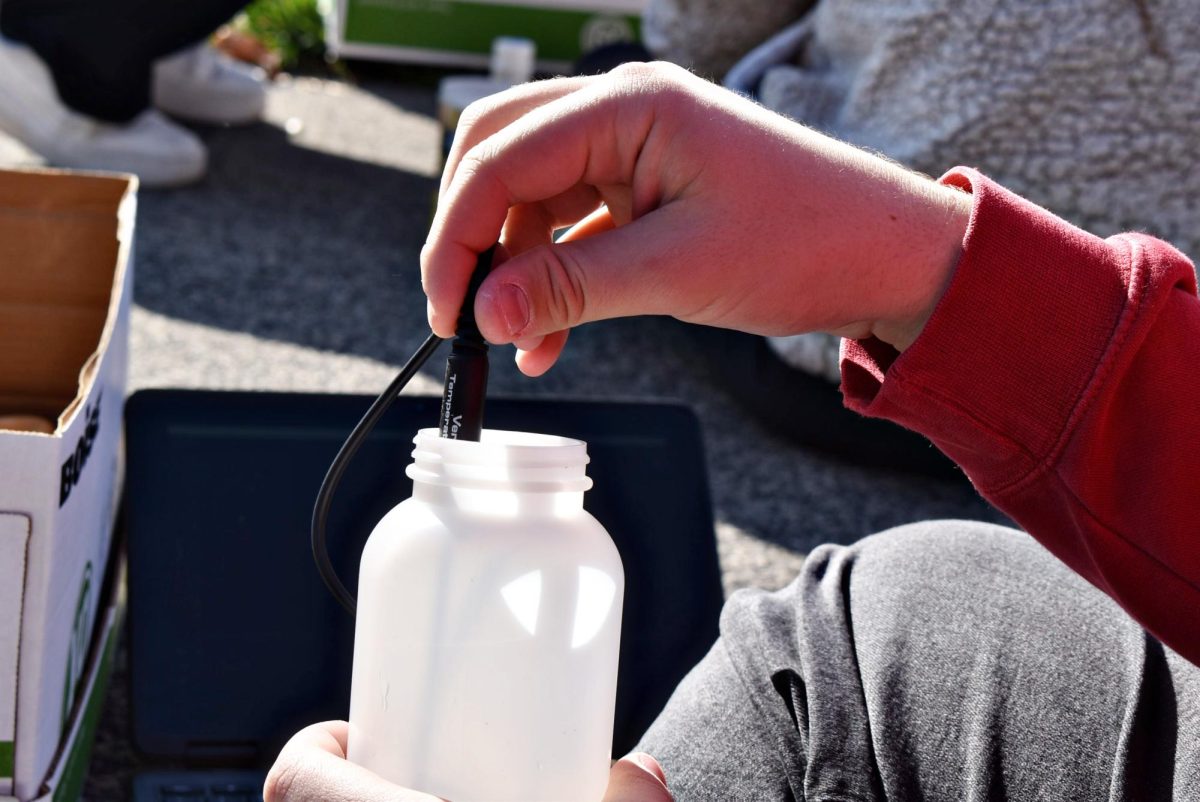
A Vernier sensor takes the temperature of water collected out of the pond. Water temperature is just one of several factors that must be taken into account when analyzing the habitat.
“The nitrogen, phosphorus, pH, and fecal coliform bacteria tests all used pills that dissolved in the stream water to give us our information, while temperature and oxygen level utilized metal instruments submerged in the stream water to give us our information,” Thompson said.
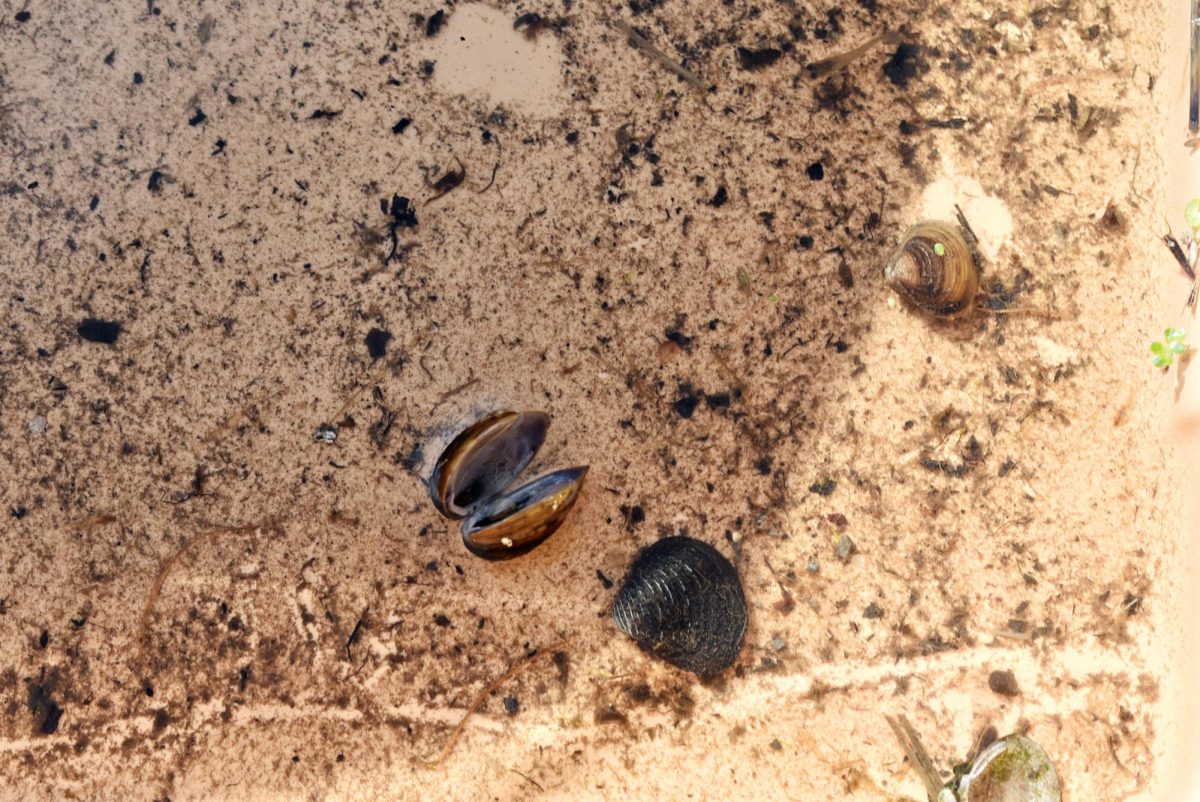
A close look at microorganisms, in this case, mussels, present in the pond.
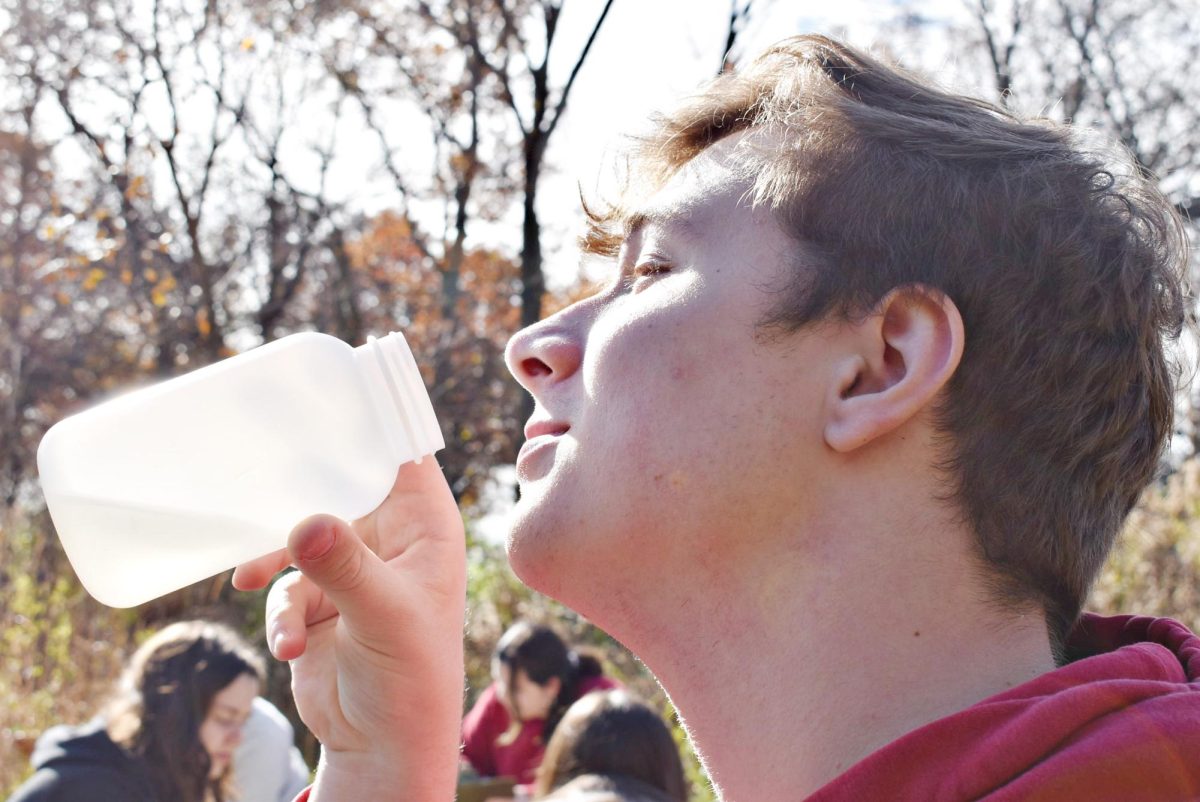
Blackburn pretends as if he is about to take a sip of the mussel-filled pond water. While the students enjoyed the field trip, they also learned valuable lessons.
“A takeaway from this experience is the importance of keeping our rivers and lakes safe. I had a great time learning about what kinds of bacteria grow into our lakes and rivers, while finding out methods of monitoring the qualities of water,” Blackburn said.
This story was originally published on Wildcat Chronicle on November 25, 2023.





![With the AISD rank and GPA discrepancies, some students had significant changes to their stats. College and career counselor Camille Nix worked with students to appeal their college decisions if they got rejected from schools depending on their previous stats before getting updated. Students worked with Nix to update schools on their new stats in order to fully get their appropriate decisions. “Those who already were accepted [won’t be affected], but it could factor in if a student appeals their initial decision,” Principal Andy Baxa said.](https://bestofsno.com/wp-content/uploads/2024/05/53674616658_18d367e00f_o-1200x676.jpg)






![Junior Mia Milicevic practices her forehand at tennis practice with the WJ girls tennis team. “Sometimes I don’t like [tennis] because you’re alone but most of the time, I do like it for that reason because it really is just you out there. I do experience being part of a team at WJ but in tournaments and when I’m playing outside of school, I like that rush when I win a point because I did it all by myself, Milicevic said. (Courtesy Mia Milicevic)](https://bestofsno.com/wp-content/uploads/2024/06/c54807e1-6ab6-4b0b-9c65-bfa256bc7587.jpg)



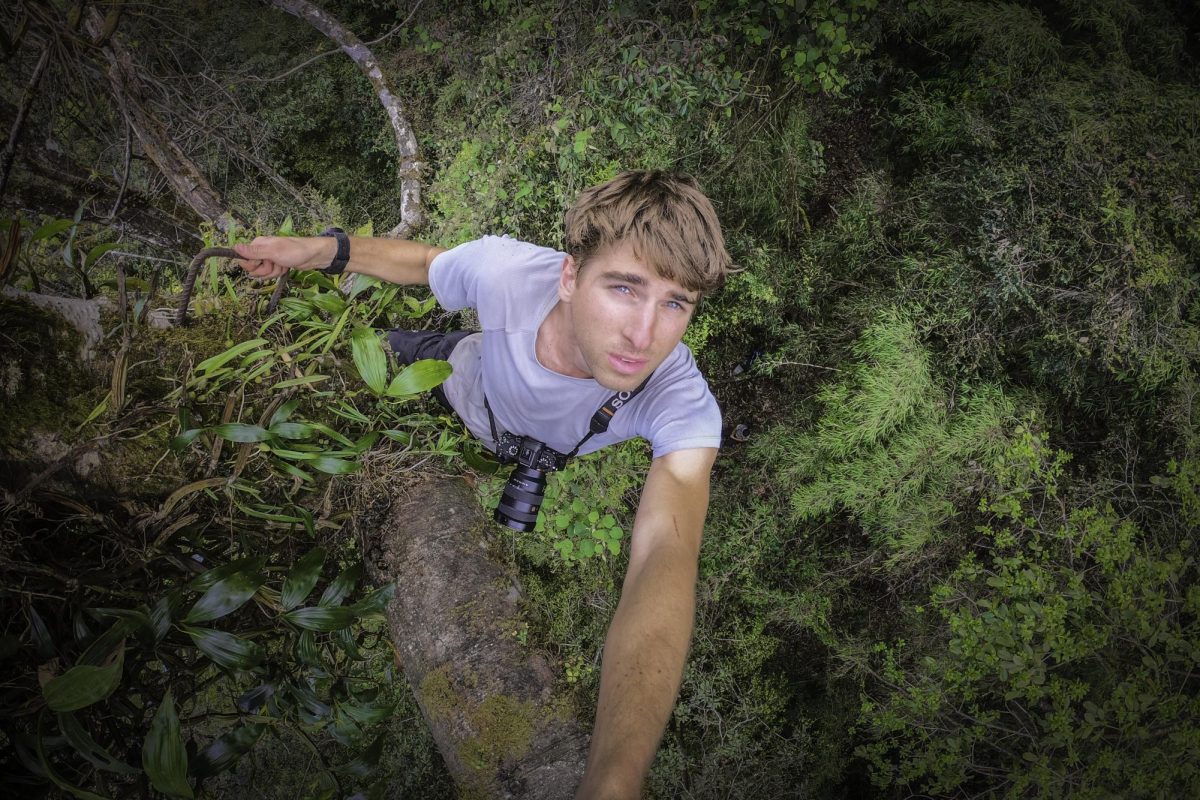




![The Jaguar student section sits down while the girls basketball team plays in the Great Eight game at the Denver Coliseum against Valor Christian High School Feb. 29. Many students who participated in the boys basketball student section prior to the girls basketball game left before half-time. I think it [the student section] plays a huge role because we actually had a decent crowd at a ranch game. I think that was the only time we had like a student section. And the energy was just awesome, varsity pointing and shooting guard Brooke Harding ‘25 said. I dont expect much from them [the Golden Boys] at all. But the fact that they left at the Elite Eight game when they were already there is honestly mind blowing to me.](https://bestofsno.com/wp-content/uploads/2024/05/IMG_7517-e1716250578550-900x1200.jpeg)









![BACKGROUND IN THE BUSINESS: Dressed by junior designer Kaitlyn Gerrie, senior Chamila Muñoz took to the “Dreamland” runway this past weekend. While it was her first time participating in the McCallum fashion show, Muñoz isn’t new to the modeling world.
I modeled here and there when I was a lot younger, maybe five or six [years old] for some jewelry brands and small businesses, but not much in recent years,” Muñoz said.
Muñoz had hoped to participate in last year’s show but couldn’t due to scheduling conflicts. For her senior year, though, she couldn’t let the opportunity pass her by.
“It’s [modeling] something I haven’t done in a while so I was excited to step out of my comfort zone in a way,” Muñoz said. “I always love trying new things and being able to show off designs of my schoolmates is such an honor.”
The preparation process for the show was hectic, leaving the final reveal of Gerrie’s design until days before the show, but the moment Muñoz tried on the outfit, all the stress for both designer and model melted away.
“I didn’t get to try on my outfit until the day before, but the look on Kaitlyn’s face when she saw what she had worked so hard to make actually on a model was just so special,” Muñoz said. “I know it meant so much to her. But then she handed me a blindfold and told me I’d be walking with it on, so that was pretty wild.”
Caption by Francie Wilhelm.](https://bestofsno.com/wp-content/uploads/2024/05/53535098892_130167352f_o-1200x800.jpg)



